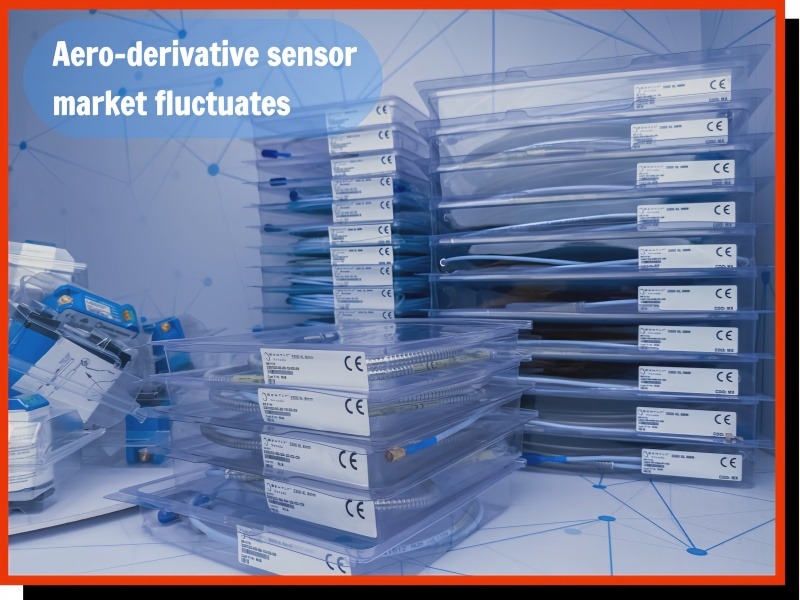- Tel: +86-18106909650
- Email: ab@mooreplc.com

In recent years, the aircraft-derived sensor market has experienced rapid growth, reflecting strong demand for high-precision sensors in aerospace, defense modernization, and autonomous logistics.
However, new U.S. tariffs on imported sensor components could hinder market development by increasing production costs, disrupting supply chains, and squeezing profit margins—especially for small and medium-sized enterprises.
Market Overview
» Sensor Types and Applications
In 2023, position sensors held a dominant 28% market share due to their essential role in vertical take-off and landing (VTOL) functions.
At the same time, industrial applications—particularly in automated logistics and robotics—accounted for nearly half the market (47.2%), as manufacturers pursue greater automation to enhance efficiency and safety.
» Regional Distribution
North America captured 36.5% of the global market, driven by increased defense spending and rapid adoption of automation in industries like logistics.
The Asia-Pacific region is expected to see strong growth fueled by investments in industrial automation and robotics, while Europe continues to maintain its market position through consistent investment in aerospace and smart manufacturing.
Recent U.S. tariffs on imported semiconductors and high-end sensor components may raise production costs for critical modules by 4% to 6%. For defense electronics and industrial-grade sensors, the following impacts are likely:
» Increased Production Costs
Manufacturers relying on imported chips or precision parts will face higher input costs, which are likely to be passed on to customers.
» Price Sensitivity in End Markets
Sectors like autonomous logistics and commercial aerospace, where profit margins are thin, may see slower adoption of high-performance sensors due to price increases.
» Profit Pressure on SMEs
Large manufacturers may absorb some cost increases through economies of scale, but smaller firms may struggle due to limited bargaining power.
Tariff policies may further destabilize supply chains:
» Longer Delivery Times
Customs inspections and reclassification processes can delay shipments of imported components, affecting production timelines.
» Inventory Strategy Shifts
Companies may stockpile key parts to hedge against future tariff hikes, tying up cash flow and storage space.
» Shift to Alternative Suppliers
Some firms may switch to non-U.S. suppliers or invest in in-house production, but such strategies require significant time and capital, possibly delaying product launches.
» North America
As the largest regional market, rising tariffs directly impact defense budgets and commercial aerospace programs, potentially delaying sensor upgrades or deployments.
» Europe
European manufacturers, highly dependent on U.S. and Asian imports, face dual cost pressures and may be forced to simplify designs or outsource R&D.
» Asia-Pacific
Although less reliant on U.S. imports, the region may feel ripple effects if demand in North America and Europe is dampened by tariff-related price increases.
Despite tariff challenges, long-term industry growth remains strong:
» Technology-Driven Innovation
Ongoing breakthroughs in miniaturization, multi-functional integration, and AI-enhanced data processing will improve sensor performance and support premium pricing.
» Strategic Partnerships
Collaborations between sensor developers, aerospace OEMs, and logistics firms can help share costs and speed up product certification.
» Supply Chain Diversification
Expanding supplier networks to tariff-exempt markets and building regional manufacturing hubs may reduce reliance on imports.
» Aftermarket Services
Sensor maintenance, upgrades, and replacements are becoming a fast-growing revenue stream, less exposed to tariff fluctuations.
While short-term cost increases, profit compression, and project delays may occur due to import tariffs, the aircraft sensor market is expected to maintain growth momentum, supported by demand from defense, industrial automation, and smart manufacturing sectors.
By broadening sourcing channels, strengthening partnerships, and continuing to innovate sensor technology, market players can overcome tariff-related obstacles and seize growth opportunities in emerging fields such as VTOL aircraft, autonomous vehicles, and intelligent factories.
Leave A Message
Scan to Wechat :

Scan to WhatsApp :
